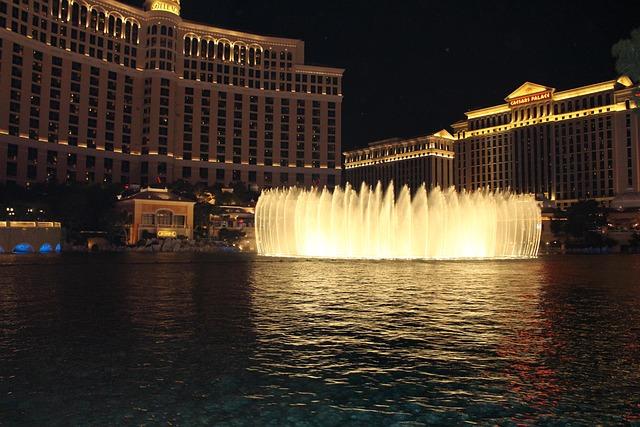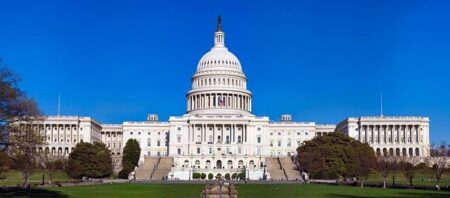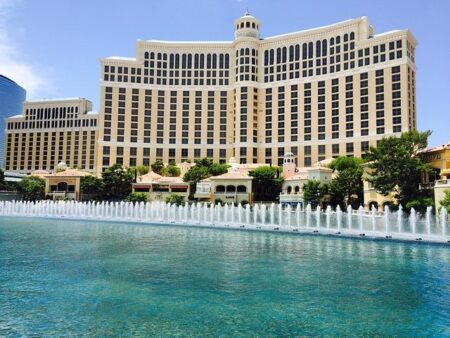Las Vegas Faces Pricing Challenges: MGM CEO Calls for Industry Reflection
Leadership Voices Concern Over Rising Costs in Las Vegas Tourism
The CEO of MGM Resorts International recently made a striking admission regarding the escalating expenses in Las Vegas, candidly stating, “Shame on us.” This statement has ignited widespread conversation about the affordability crisis impacting the city’s tourism sector. As one of the largest operators in Las Vegas, MGM’s leadership highlights the delicate balance between maintaining profitability and ensuring the city remains accessible to a broad spectrum of visitors. The surge in prices for lodging, dining, and entertainment is increasingly seen as a barrier, notably for middle-income families and younger travelers.
How Price Inflation Is Affecting Visitor Experience and Industry Competitiveness
Industry analysts warn that without recalibrating pricing strategies, Las Vegas risks diminishing its allure as a top travel destination. Key concerns include:
- Accommodation Costs: Sharp increases in hotel rates during peak seasons are limiting visitor numbers.
- Entertainment Expenses: Higher ticket prices are reducing discretionary spending on shows and events.
- Food and Beverage Prices: Inflation is driving up daily visitor expenditures on dining.
To illustrate this trend, consider the following comparison of average daily visitor costs from 2021 to 2023:
| Category | 2021 Average ($) | 2023 Average ($) | Percentage Increase |
|---|---|---|---|
| Hotel Room Rate | $120 | $175 | 45.8% |
| Entertainment Tickets | $60 | $85 | 41.7% |
| Food & Beverage | $50 | $70 | 40.0% |
Root Causes Driving Up Hospitality Expenses in Las Vegas
Several intertwined factors have contributed to the upward pressure on prices within Las Vegas’s hospitality industry. Labor shortages remain a significant challenge, compelling businesses to offer higher wages to attract and retain staff amid a recovering economy. Concurrently,supply chain bottlenecks have increased the cost of essential goods and materials,further inflating operational expenses. The resurgence in tourism demand has compounded these issues, creating a complex surroundings for operators striving to sustain profitability without alienating customers.
Key contributors to rising costs include:
- Increased minimum wage requirements impacting payroll expenses
- Higher energy prices affecting utility bills and infrastructure maintenance
- Expanded health and safety protocols necessitating additional investment
- Escalating costs for food and beverage supplies
| Expense Category | Cost Increase (2023 vs. 2021) |
|---|---|
| Labor Costs | +18% |
| Food & Beverage | +12% |
| Energy Expenses | +15% |
| Health & Safety Measures | +9% |
Strategies Proposed by Experts to Enhance Affordability in Las Vegas
Hospitality industry leaders have openly reflected on the pressing need to address the affordability crisis that risks deterring a broad range of visitors. The MGM CEO’s forthright comment about the industry’s obligation has sparked calls for innovative solutions aimed at restoring balance. Experts advocate for adopting more flexible pricing models and creating value-driven packages that appeal to diverse traveler segments. Leveraging technology to optimize operations and reduce costs is also seen as a critical pathway to passing savings onto guests.
Recommended approaches include:
- Implementing dynamic pricing: Adjusting rates based on real-time demand while protecting budget-conscious travelers.
- Collaborating with local enterprises: Developing bundled offers that enrich visitor experiences and provide cost savings.
- Expanding public transit options: Reducing intra-city travel expenses to make the destination more accessible.
- Enhancing pricing transparency: Building consumer trust through clear and honest communication about costs.
Economic Advantages of Tackling Price Barriers in the Entertainment Capital
Addressing the affordability challenges in Las Vegas holds the potential to invigorate the local economy by attracting a broader and more varied visitor demographic. More competitive pricing could encourage longer stays and repeat visits, motivating tourists to explore beyond the conventional casino and entertainment hubs. This expanded engagement would benefit a wide array of sectors,including dining,retail,and transportation.
Expected economic benefits include:
- Higher hotel occupancy rates driven by more accessible room prices
- Increased daily visitor spending on food, entertainment, and attractions
- Growth in employment opportunities linked to tourism expansion
- Enhanced destination reputation fostering sustainable tourism growth
| Economic Indicator | Current Status | Projected Advancement |
|---|---|---|
| Hotel Occupancy Rate | 75% | 85% |
| Average Visitor Spending | $220 per day | $280 per day |
| Tourism Employment Growth | +1.2% | +3.5% |
Looking Ahead: Balancing Profitability and Accessibility in Las Vegas
The candid acknowledgment by MGM Resorts’ CEO shines a spotlight on the urgent need for the Las Vegas hospitality industry to reconcile rising costs with visitor affordability. As the city continues to cement its status as a premier global destination,industry stakeholders face increasing pressure to implement pricing strategies that welcome a diverse range of travelers. The coming months will be pivotal in observing how major players like MGM and others respond to these challenges and whether meaningful initiatives to moderate prices and enhance value will take shape.




